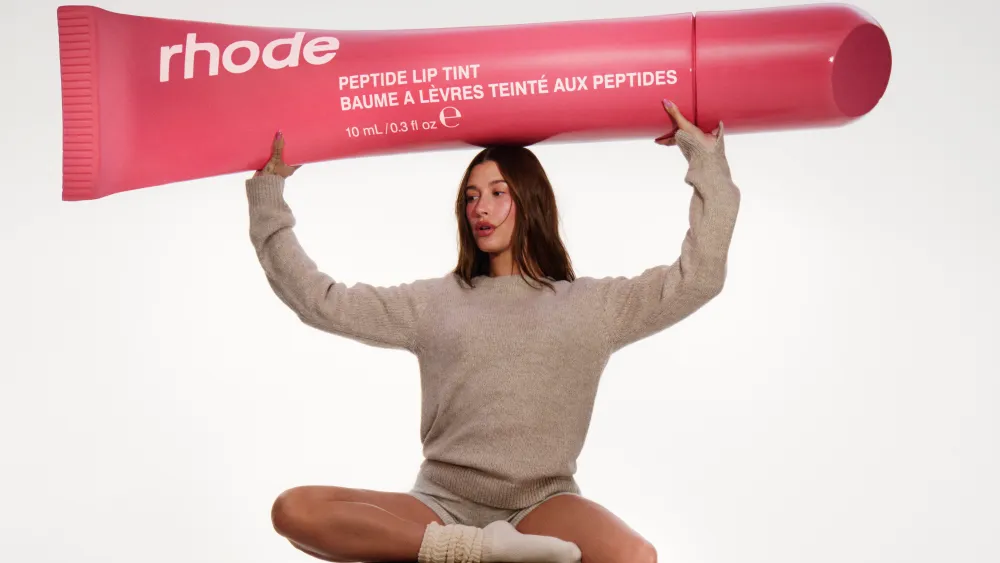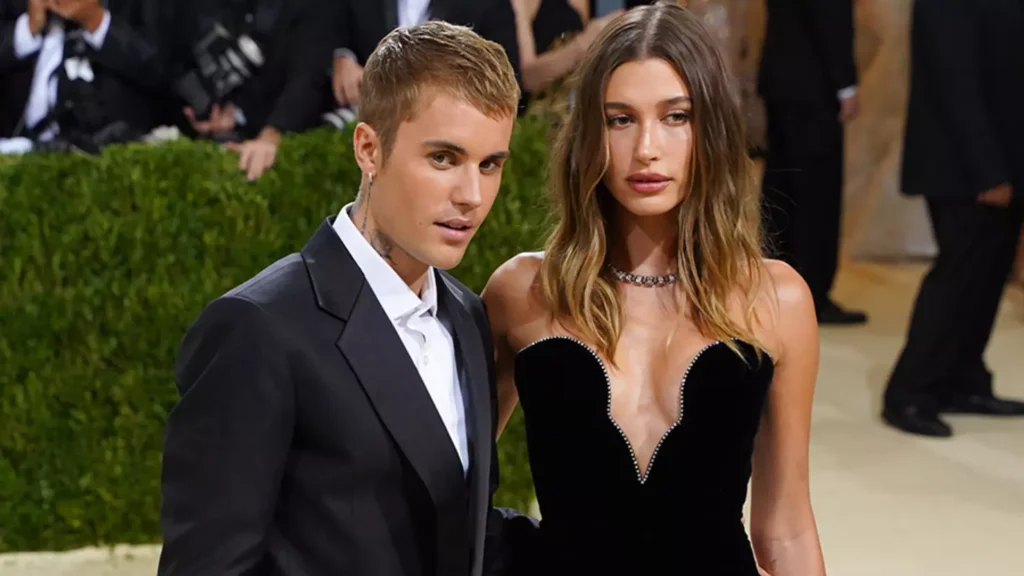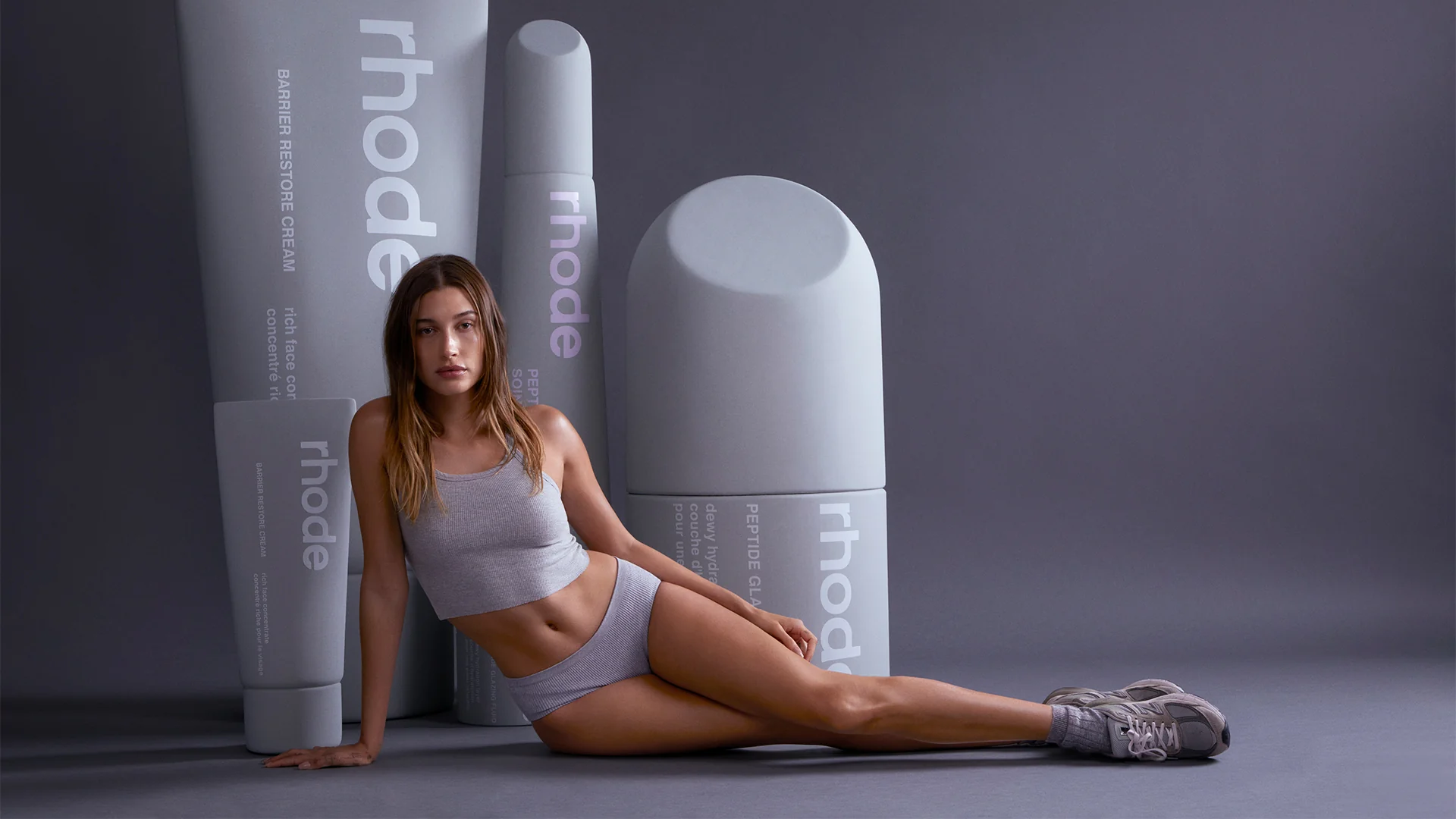When supermodel Hailey Bieber launched Rhode in 2022, even she couldn’t have imagined how fast the brand would glow up. Less than three years later, in May 2025, e.l.f. Beauty announced it would acquire Rhode in a deal reported at $1 billion. It’s kind of wild to think Rhode – a lean, DTC skincare line – became one of the “most successful and influential beauty brands” so quickly. Rhode’s story is a modern celebrity-founded startup tale: part lifestyle branding, part savvy marketing strategy, and part influencer magic. In this case study, we break down how Rhode built its brand, products, community and marketing to achieve billion-dollar success – and what entrepreneurs can learn from Hailey’s journey.
Building a Lifestyle Brand and Community
From the start, Rhode presented itself not just as a skincare brand, but a lifestyle community. The brand’s vibe is all about a fresh-faced, dewy aesthetic – think “glazed-donut skin” and a “strawberry girl glow”. That casual, natural beauty stance quickly resonated with younger shoppers. AP News notes Rhode became “popular with young consumers and other fans of Bieber’s fresh-faced, casual aesthetic” as an alternative to the ultra-glam look. In practice, this meant simple, pastel-hued branding and honest product names (even the brand name “rhode” is lowercase, in line with e.l.f.’s style).
Hailey herself reinforced this ethos by engaging her audience personally. On Zoom calls she’s open and upbeat, often chatting about inspiration and community. As she told Vogue, finding the right partner for Rhode felt like finding a “home.” It was critical that the e.l.f. team shared Rhode’s values and community focus: “as soon as I met the e.l.f. Beauty team, I could tell they had such a strong sense of community… because I know how I feel about our Rhode community,” Hailey said. This underscores one of Rhode’s branding strategies: focus on authenticity and community. Fans are drawn not only to the products but the story – Hailey the founder is seen as relatable and genuine, not a distant celebrity, and that personal touch becomes part of the brand.
Key branding strategies: emphasize a laid-back, “enhance-your-own-beauty” message, a consistent visual identity (soft pinks and clean design), and building a Rhode community through social engagement. Hailey says Rhode’s approach is always “how can we enhance what you already have?” – a line that captures the brand’s subtle, confidence-boosting angle. In short, Rhode didn’t just sell creams; it sold a lifestyle image (healthy skin, morning routines, effortless beauty), strengthened by Hailey’s own influencer presence on Instagram and YouTube. This lifestyle branding made Rhode feel like more than a product – it felt like insider access to Hailey’s beauty philosophy.
Product Philosophy & Development
At launch, Rhode was a pure skincare line – simple cleansers, moisturizers, and their breakout OG Peptide Lip Treatment. The idea was to hydrate and nourish skin so it looked naturally radiant. Product development at Rhode was thoughtful and sometimes painstaking. Hailey describes herself as a “crazy perfectionist,” determined to keep each product’s formula just right. For example, when Rhode moved into makeup in 2023, the strategy wasn’t to throw out a bunch of products but to innovate incrementally. They pigmented their beloved lip balm instead of overhauling the formula: “it took a very long time to create them because I wanted to keep the formula the exact same,” Hailey explained about the new Peptide Lip Tint. “I’m not a chemist, so I thought it would be ‘just slap some color in there’… It really wasn’t that easy”.
Early on, Hailey learned that mistakes happen, even in product design. One famous “mishap” was the packaging color: the cartons arrived slightly off-shade from what she wanted. At first Hailey was upset – “very sad about it,” she recalled – but it turned into a valuable lesson. “In hindsight it was actually really not a big deal… just something I had to learn was part of the process,” she said. Through trial and error, Rhode fine-tuned not just formulas but the entire customer experience.
Product Lessons: Rhode’s product lineup expanded carefully: start with a hit product (lip balm) to build fans, then launch related extensions (tint, blush, liners) that reinforce the brand’s “natural glow” mission. Keep formulas consistent, and iterate based on customer feedback (and yes, learn from packaging mistakes). Rhode’s philosophy was to enhance, not overhaul – every new item had to feel on brand. As Hailey put it, Rhode’s goal was always, “how can we enhance what you already have?”. That focus on gentle enhancement, communicated through product development, became part of Rhode’s reputation and marketing storytelling.
Marketing Channels & Growth Strategy
Rhode’s rise followed a lean, modern marketing playbook for beauty startups. The brand launched direct-to-consumer (DTC) online only, building a data-driven digital storefront. The strategy was to own the customer relationship from the start: collect emails, interact on social media, and let early adopters spread the word. Social channels (Instagram, TikTok) were supercharged by Hailey’s massive following – she basically became Rhode’s chief influencer.
Over time, Rhode layered on more channels. Pop-up shops and brand events gave fans IRL experiences – Allure reports that even as a DTC brand, Rhode ran plenty of in-person pop-ups. In 2024, Rhode crossed over into retail: e.l.f. announced Rhode products would hit Sephora’s shelves (online and in-store) in late 2025. “I’m super excited,” Hailey said – “we’re really focused on Sephora right now” – marking a major distribution leap. This hybrid approach (DTC + prestige retail) is classic startup scaling: first prove demand on your own site, then hitch your wagon to an established retailer for wider reach.
Marketing Channels: Rhode leveraged social media influencers (primarily Hailey herself and her celeb network) as organic promoters of the brand. The team also invested in targeted digital ads and content marketing (think #sponsored posts featuring real users). With e.l.f. backing, Rhode has the marketing muscle to get on more channels: Sephora, global markets, and even future drugstore shelves.
Key growth moves: build a cult DTC following with authentic social storytelling; expand slowly through high-profile partnerships (like Sephora); keep engaging the community through pop-ups and events; and finally, use a major corporate partner (e.l.f.) to turbocharge marketing spend and international expansion. These channel strategies turned Rhode from a niche skincare line into a mainstream brand.
Influencer Power & Celebrity Strategy
At its heart, Rhode is a classic celebrity-founded startup, and the Bieber name meant immediate buzz. From day one, Rh ode’s PR capitalized on Hailey’s influence. Media stories often mention she’s Justin Bieber’s wife, and sure enough that link grabbed headlines (“She one-upped him,” quipped TMZ about selling her brand for $1B). But the Rhode team was careful to frame this asset wisely: Hailey never just rested on her fame. She framed Rhode as her venture, downplayed celeb glam, and instead highlighted her personal passion for skincare.
The result: Rhode’s story felt relatable, not just celebrity fluff. Hailey often appears in Rhode marketing doing her daily routine, not posing in glamorous ads. This “girl-next-door” approach is the cornerstone of Rhode’s influencer marketing strategy: be authentic first. That said, the celebrity factor helped with launch speed. As one TV host noted, “there are a lot of people who think [Rhode’s success is] because of Justin Bieber… part of her brand is Justin Bieber”. The Rhode PR machine acknowledges this, but emphasizes Hailey’s own vision and community focus.
Influencer tactics: Hailey used her Instagram (tens of millions of followers) to tease drops and share skincare tips. She collaborated with other influencers in makeup videos and even launched a YouTube channel of her own (producing lifestyle content and Q&As). This cut-through word-of-mouth gave Rhode instant visibility that most startups could only dream of. The brand also formed savvy partnerships – not just the e.l.f. deal, but limited-edition collabs and cross-promotions (rumors swirl of a possible Rhode×e.l.f. crossover since both live under the new parent company). As Tarang Amin of e.l.f. said, he sees Rhode as a “like-minded disruptor” and a “perfect marriage” with e.l.f.’s vision. In other words, the partnership lets Hailey’s influencer power scale up globally.
Integrating celebrity/influencer marketing with a grounded brand voice gave Rhode a huge edge. They turned personal fame into product traction without alienating customers. When asked about future collaborations, Hailey winked that “nothing’s off the table” as long as it fits her vision. That flexibility – combined with her built-in star cachet – will keep Rhode’s marketing strategy fresh.

Embracing Mistakes & Growth Mindset
No startup is perfect, and Rhode learned that early. Hailey Bieber openly talks about embracing mistakes as part of building a brand. In 2022, at a Forbes Under-30 summit she said her philosophy was to expect mishaps and learn from them: “Be prepared for the mishaps… mistakes are OK… it will help you drive your brand forward”. This mindset was tested with that packaging fiasco – the boxes didn’t match her perfect pink – but Hailey laughed it off later. “In hindsight… it was not a big deal… just something I had to learn,” she admitted.
That candid, humble attitude became part of Rhode’s culture. Hailey even quipped that there’s “no such thing as a perfect launch”. By talking publicly about these struggles, she made the brand more relatable. Rhode followers essentially watched Hailey learn how to run a company in real time – and see that even a “crazy perfectionist” can roll with the punches. As Hailey put it, “our mistakes actually help make us better as people… and when you have a brand, it helps you create an even better brand”.
Lesson: Cultivate a resilient startup culture. Rhode’s “fail fast and fix” approach – especially with quality and production – meant issues were caught early and corrected. For example, after the color mix-up, future batches were double-checked. This growth mindset let Rhode move quickly without fear. Young entrepreneurs should take note: transparent problem-solving can even become a PR win.
Strategic Partnerships & Expansion
Ultimately, Rhode’s big break was aligning with the right partner. By mid-2025, Hailey and team had hired investment banks to entertain buyout offers. Among them, e.l.f. Beauty stood out. Hailey described the e.l.f. deal process as choosing a new “home” for Rhode. She says it wasn’t just about the money – she “admired [e.l.f.’s] marketing campaigns and disruptive strategy” in beauty, and felt an immediate values fit. “I could have gone to a table of suits,” Hailey said of picking acquirers, “but e.l.f. Beauty’s partnership offering was different”.
Under the deal, e.l.f. will pay roughly $600 million in cash, $200 million in stock, plus up to $200 million in earn-outs as Rhode grows. In the short term, the biggest change is more resources for Rhode – in production, marketing, and global expansion. Tarang Amin, CEO of e.l.f., has promised to “nurture Hailey’s vision” and pump more marketing dollars into the brand. He calls the merger a “perfect marriage” – two wellness brands with vegan, cruelty-free lines.
For Rhode, the timing is ideal. The brand is still young (founded 2022) but already achieved scale ($212 million in sales last year). Now, with e.l.f. behind it, Rhode plans to expand globally – more retail locations, new products, and even programs like membership or digital content. Hailey’s role will also grow: she’ll stay on as Chief Creative Officer of Rhode and advisor to e.l.f., charting product and innovation strategy. As she told Allure, “my vision has never been more clear to me. I want to expand globally… and I really believe that e.l.f. is going to help us get there.”
The partnership itself is a key strategic move: staying true to Rhode’s brand while gaining e.l.f.’s scale. For example, Rhode’s drop into Sephora was likely accelerated by this deal. Going forward, expect Rhode marketing to blend Hailey’s personal voice with e.l.f.’s retail know-how. Together they’ll tell the Rhode story to a bigger audience.
Key Takeaways for Entrepreneurs and Brand Builders
- Build a strong founder-led identity: Rhode succeeded by doubling down on Hailey Bieber’s authentic voice. Celebrity status helped open doors, but Rhode’s long-term growth came from a relatable narrative. Lesson: In a celebrity-founded startup, let personal brand enhance rather than overshadow your product vision.
- Focus on lifestyle branding: Rhode wasn’t just a cream; it was a lifestyle. Its marketing lifestyle-focused imagery (dew-skin faces, simple routines) and direct community engagement. Lesson: Create an emotional connection with customers. Rhode fans didn’t just buy moisturizer; they bought into a fresh, accessible beauty lifestyle.
- Master your product story: Rhode’s product philosophy – enhance natural beauty – guided its development. Every launch tied back to this core idea. Lesson: In your marketing, weave the same narrative. Rhode’s launch of tinted lip balms (pigment added to a cult lip product) told a consistent brand story, which made the line feel cohesive and strategic.
- Embrace smart marketing channels: Rhode started DTC, then smartly layered in pop-ups and Sephora. Social media and influencer marketing (mainly via Hailey) gave Rhode instant traction, but they didn’t stop there. Lesson: Use a multi-channel approach. Proven DTC traction can justify expansion into big retailers and collaborations later.
- Turn mistakes into authenticity: Hailey’s openness about Rhode’s stumbles built trust. The packaging color error and other hiccups became teaching moments. Lesson: Show your audience the human side of building a brand. If you admit and fix mistakes, customers appreciate the transparency – as Hailey said, mistakes “help you create an even better brand”.
- Partner with purpose: Finally, Rhode’s sale to e.l.f. Beauty shows the power of aligned partnerships. It wasn’t just about capital; it was about finding a team that “cares about founders and supporting [my] vision”. Lesson: For brand builders, seek investors or partners who share your values. A “perfect marriage” of brand cultures can multiply success.

Rhode’s rapid ascent – from startup skincare line to a $1B e.l.f. acquisition – is a striking example of modern beauty marketing. It combines lifestyle branding, influencer marketing, lean startup strategy, and just the right dash of celebrity sparkle. For entrepreneurs in the beauty (or any) space, Rhode underscores that authenticity, community and resilience can turn big dreams into reality. As Hailey herself put it, building Rhode has been about chasing “really big dreams… I could never have anticipated that it would happen at this exact time” – but by focusing on vision, adapting to change, and dreaming big, she did.
Sources: Quotes and data come from interviews and press releases (Allure, Vogue, AP News, etc.) detailing Rhode’s story and strategy.






One Comment